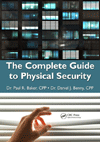How to Use Data, AI & the Cloud to Change Your Building Operations

Every day, CISOs, CSOs, and their teams are challenged to discover hazards, assess risk, and respond appropriately. Mitigating risk requires insight into thousands of employees across many locations and access points. The ability to filter out regular and benign access activity allows a security team to drill down into anomalies, see what is happening and who is doing it.
Thankfully, there is a treasure trove of access data waiting to be used to analyze facility utilization, user behavior and operational trend data. In addition to identifying malicious activities, access data can reveal suspicious behavior, patterns and general non-compliance with the regulations. Armed with knowledge, your security team can take proactive steps to reduce risk.
The Importance of Cloud
Despite the power of access data, many are still relying on on-premise solutions over multiple office locations, which hinders their ability to properly use physical facility access data. They cannot leverage these powerful business intelligence insights without cloud infrastructure. There’s a reason why cloud technology is becoming the norm. It is easy to use, accessible anywhere, easy to scale and can be administered remotely. Cloud solutions are vastly more efficient than older, clunky, server technology, and has lower up-front costs. In fact, 65 percent of customers are likely or extremely likely to use cloud-based access control.
AI, the Game-Changer
AI engines work by using a neural network to learn patterns. This can be used for access data by learning the patterns of people in your building to determine what is normal and what isn’t, all while cutting through noise between the two. AI is also incredible smart: when it sees an anomalous activity, it know that there is something out-of-the-ordinary happening. AI is also super flexible: it can be tuned to each individual and not broad company or facility-based policies. This makes alerts more accurate and can reduce false positives. Besides workflow improvement, the algorithms provide an additional layer of security by flagging events that may have otherwise gone completely unnoticed. And, cloud solutions are customizable, can be easily upgraded.
Leveraging Data
Did you know that 63 percent of companies can’t gather insights from big data in a timely manner, and up to 73 percent of data goes unanalyzed? Don’t let this be you. Identify which areas of your physical space are being used, by whom, and for how long just by using access control data. You can use this real-time access data to cut off lights and lower air conditioning and augment staff needs based on access trends. Access data not only protects your assets, but also can save money. In a hospital, for example, security, facilities, and operations managers can use that data to better manage resources such as guard deployments, lighting and energy use, pharmaceutical availability, restaurant and gift-shop hours, and lab room scheduling. In work environments ranging from offices and distribution centers to factories and laboratories, managers can more effectively make staffing decisions based on time, facility location, access privileges, occupancy requirements, PPE availability and numerous other factors.
Looking for a reprint of this article?
From high-res PDFs to custom plaques, order your copy today!






-(1).jpg?height=200&t=1639404922&width=200)


